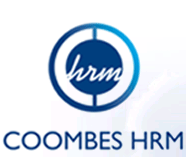Case Studies
- Developing a culture of high performance
- Identification of Company Success Criteria & Learning Needs Analysis
- Career Path Identification
Developing a culture of high performance
At Coombes HRM we believe that the Performance Management process is a strategic management technique used to link business objectives and strategies with individual goals, actions, performance and rewards through a defined process. A key aspect is the ability to continuously secure improvements in the performance of individuals and teams against predefined business strategies and objectives.
Coombes HRM was asked to re design an appraisal system and to re develop it into a strategic management tool. The company was not linking the company goals to individual plans. There was no way of knowing if an employee was performing to the required standard and there was no consistency across the site as to how appraisals were being implemented. The individual’s training needs were not discussed or formulated either.
We started by setting up focus groups with staff to find out what aspects of the system they would like to see improved. Most of this feedback was in line with what the company needed to do and indeed best practice. Due to the extent of employee involvement, the new process was very positively received by employees. Role definition is also a crucial part of this process. In addition we also tied the performance system into the reward system.
The Company and it’s employees experienced a more focused approach to work and results; much improved communication and relationships; and leaders had greatly enhanced their coaching skills.
Identification of Company Success Criteria & Learning Needs Analysis
This company is a successful growing business who wanted to develop the next generation of leaders. We firstly figured out what competencies are necessary to be successful in this business and then we mapped this pattern of competencies against individuals by using a 360 degree feedback questionnaire mechanism along with one to one interviews. Development needs were thereby identified and set in line with the strategic plan.
Learning needs were analysed and appropriate interventions are agreed. These interventions varied between mentoring, coaching, management development programmes, job shadowing, university and college courses, job enrichment, and goal setting with regular reviews.
This resulted in more competent productive managers who were able to lead others in the organisation more effectively. They had new frameworks and new processes to work from that gave them confidence.
Career Path Identification
Sandra Coombes led a project in a software multi national which were faced with the challenge of retaining staff and recognised that they needed to provide employees with clear career paths within the organisation. The starting point for this was to accurately capture everybody’s job on a job description. Key differences between roles were identified and lateral and upward moves available to job holders were described and available for all employees via the intranet.
In addition, a fair internal promotions system was developed to facilitate moves in an open, transparent and objective manner. This project resulted in reduced employee turnover and increase motivation. The job evaluation system, the recruitment and reward processes were all used and developed.
